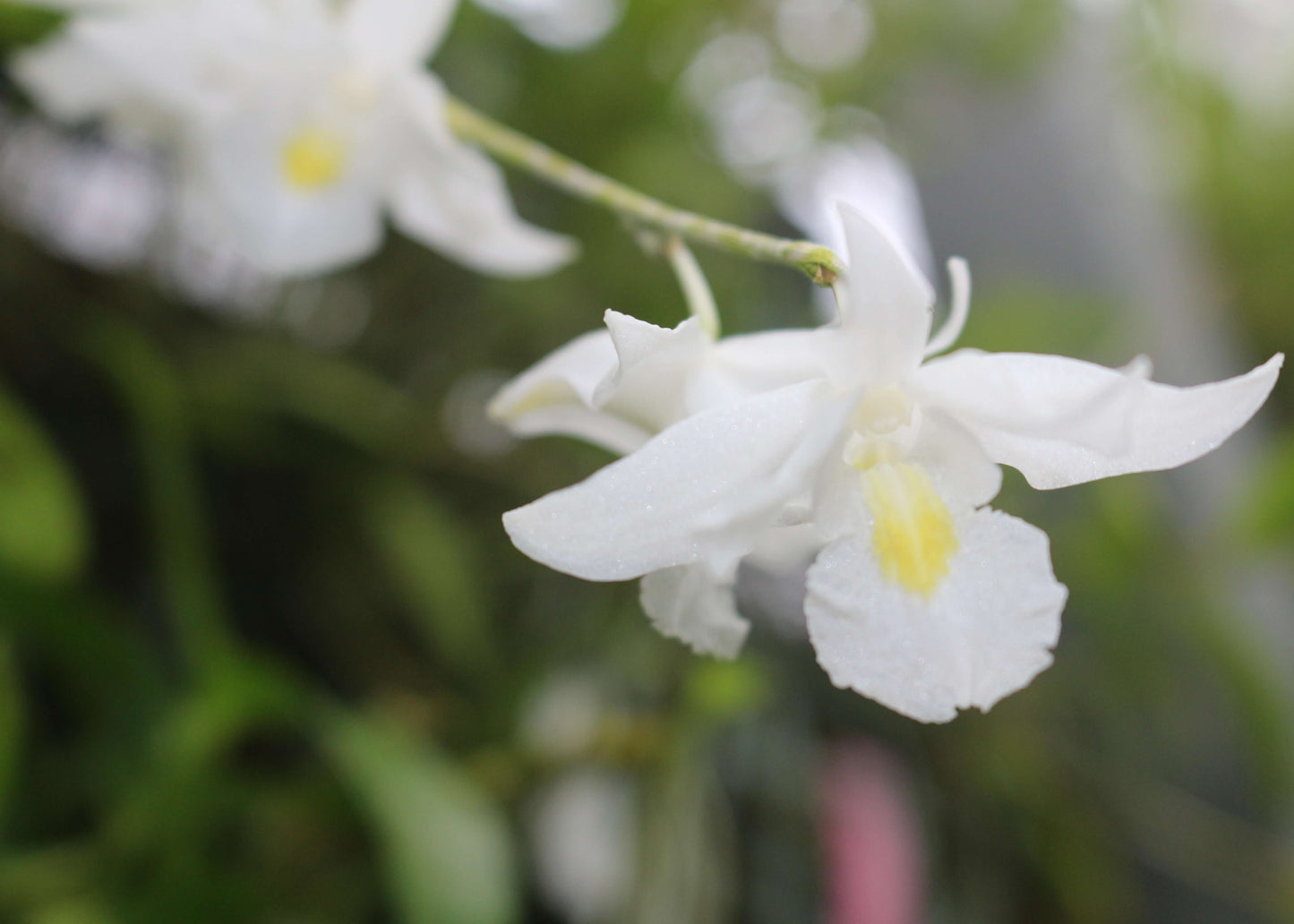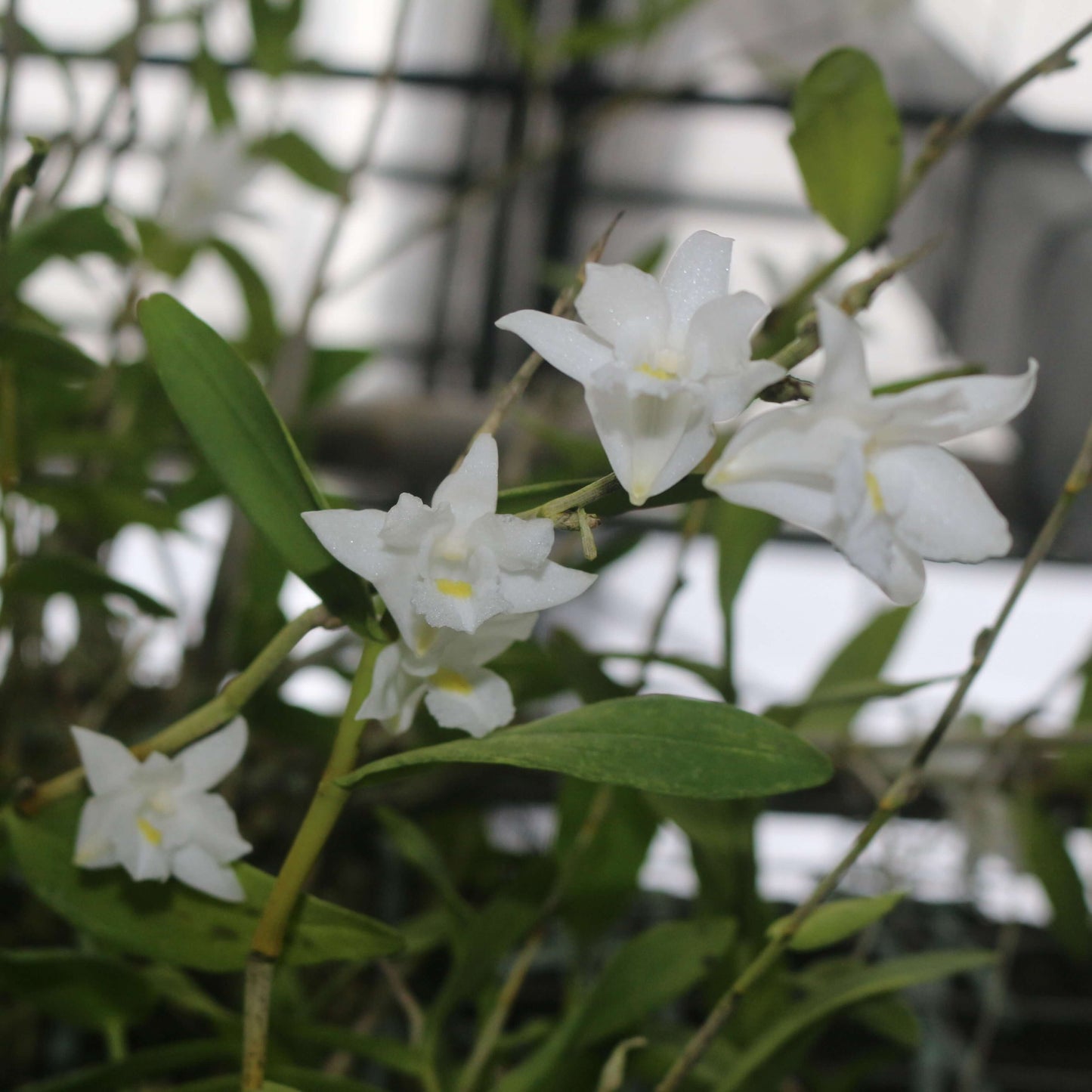Begin With Plants
Pigeon Orchid (Dendrobium crumenatum)
Pigeon Orchid (Dendrobium crumenatum)
Couldn't load pickup availability
Dendrobium crumenatum, also known as the Pigeon Orchid, is an epiphytic orchid native to tropical regions of Southeast Asia, including India, Malaysia, Singapore, Indonesia, and the Philippines. It thrives in lowland rainforests and coastal scrub habitats. The plant is characterized by its upright, sympodial pseudobulbs that can grow between 30–70 cm in length. These pseudobulbs bear leathery, oblong to egg-shaped leaves arranged in two rows. The flowers are pure white, 30–40 mm in size, and emit a strong fragrance, though each bloom lasts only for a single day. Interestingly, all flowers in a given area tend to bloom simultaneously, often triggered by a sudden drop in temperature, such as after a rainfall.
Features:
-
Common Names: Pigeon Orchid
-
Flowering Trigger: Sudden temperature drops, typically following rainfall
-
Flower Lifespan: Approximately one day
-
Fragrance: Strong, sweet scent
-
Growth Habit: Epiphytic, with upright pseudobulbs
-
Native Habitat: Lowland rainforests and coastal scrub
Care Tips:
-
Light: Provide bright, indirect light. Direct sunlight may scorch the leaves.
-
Temperature: Maintain temperatures between 20–30°C (68–86°F). Ensure a slight drop in temperature at night to mimic natural conditions.
-
Humidity: High humidity is essential, ideally between 60–80%. Regular misting or a humidity tray can help maintain moisture levels.
-
Watering: Water regularly during the growing season, allowing the medium to dry slightly between waterings. Reduce watering during the dormant period to prevent root rot.
-
Fertilization: Apply a balanced orchid fertilizer every 2 weeks during the growing season. Reduce feeding during the dormant period.
-
Potting Medium: Use a well-draining orchid mix, such as one containing bark, perlite, and sphagnum moss.
-
Repotting: Repot every 1–2 years or when the medium breaks down to maintain healthy root systems.
Share



